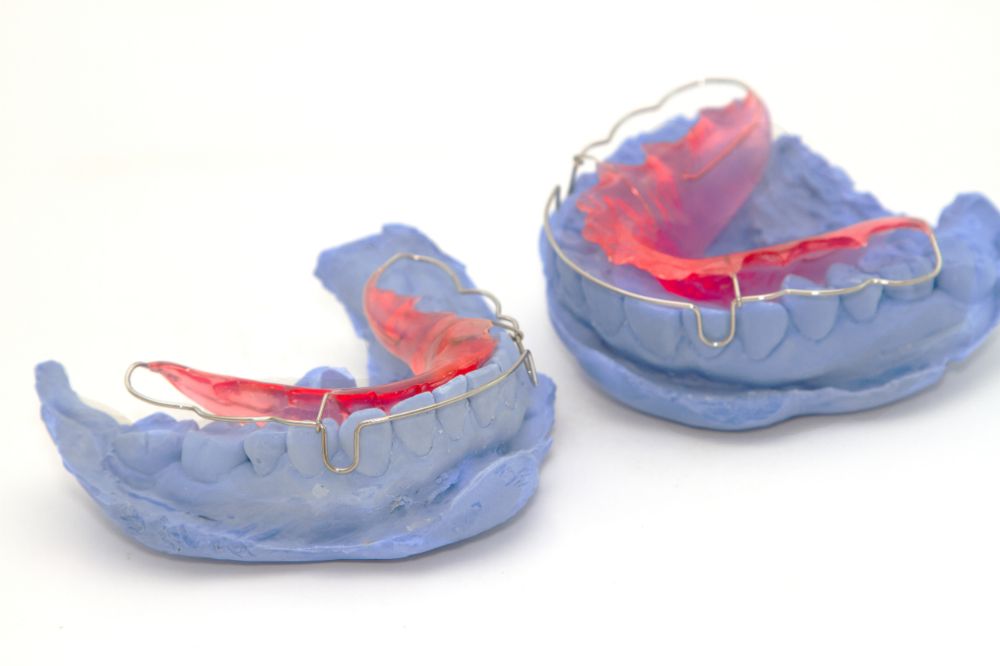
How Orthodontic Retainers Are Made
Over time, it’s common for teeth to shift position from early youth through adulthood. As a result, anyone who has had braces or Invisalign is encouraged to wear retainers to keep their teeth properly aligned.
If your orthodontist has suggested that you wear a retainer, you may be wondering, how does a retainer work exactly, what is the best retainer type, and how are retainers made?
What Are Retainers and How Do They Work?
Retainers are pre-formed devices that fit in the mouth and rest behind and in front of the teeth to help maintain realignment after braces or Invisalign. Each retainer is custom fitted to the specific patient and is typically made of metal, plastic, or a combination of the two. Retainers are used as a form of maintenance after braces are removed to ensure teeth do not immediately begin shifting after the initial correction.
Wearing a retainer after orthodontic treatment is important regardless, but it is especially important for younger patients whose jaws and teeth are still prone to growing and makes them easier to shift around. A retainer helps to keep these teeth in place.
Depending on your previous treatment and results, your orthodontist might recommend specific lengths of time the retainer needs to be worn. If you’ve been wearing your retainer for a while now, your orthodontist might suggest only wearing a retainer at night. It’s important to listen carefully to the treatment plan and timeline your orthodontist sets out for you.
3D Printing Technology and Retainers
The design of a retainer is completely customized to the wearer. All orthodontists used to take an impression of the patient’s mouth, which was then put into a plaster mold to create an original piece. iTero digital scanners are now used by many orthodontists, including Dr. Milnor, to help design extremely accurate retainers.
With this new 3D printing technology, it is now easier and faster for your orthodontist to take an accurate impression of your teeth. With this new technology, many orthodontists can print a custom-fitted retainer right in their own office. This makes retainers more affordable and faster to obtain since they no longer have to be crafted in a lab. This also makes getting a replacement retainer a lot easier in case your retainer gets lost or damaged.
Different Types of Retainers
Hawley Retainers
The Hawley Retainer is officially over 100 years old. Named after its creator, Dr. Charles A. Hawley, the removable retainer first came into existence in the early 1900s and was clinically tested and implemented for the first time in the 1920s.
Hawley retainers use metal wires around the base of the retainer that can be adjusted as necessary to keep the teeth adequately aligned. Hawley retainers are made with plaster molds designed from impressions or 3D images taken of the patient’s mouth. Plastic is molded around the plaster mold. After the plastic sets, it is taken out of the mold and wires are attached and bent to securely fit around the teeth in the patient’s mouth. Because Hawley retainers are handmade, they can be more expensive to replace. While at one time, Hawley retainers were once the more popular option for retainers, new advances in orthodontic technology has led to the Essix retainer being the most widely used.
Essix Retainers
Essix retainers, introduced in the 1990s, are a clear option that looks similar to an Invisalign aligner. Essix retainers are the most popular type of retainer as they can be made with transparent materials that are considerably less noticeable. They are made with high-performance shaped plastic that completely covers the teeth and can last up to 24 months. Essix retainers are made by having a piece of plastic heated by a machine to soften and then vacuum suctioned to the mold of the patient’s teeth. The excess material is trimmed and the edges are smoothed to make the fit more comfortable.
Fixed Retainers
As a semi-permanent solution, fixed retainers address more severe alignment issues and rest on the inner side of the teeth. Once the retainer is appropriately situated, it is bonded to the teeth and is designed to stay in the mouth, eliminating the possibility of the retainer not being worn enough to be effective. Fixed retainers are a good option for younger patients so there is no worry of the retainer being lost, damaged or not used properly.
How to Care for Your Retainer
Since most retainers are in and out of patients’ mouths regularly, it’s essential they are cared for properly . Much like contact lenses, retainers should always be cleaned before they are used again. Using a toothbrush with mild dish soap and warm water is sufficient enough to clean the retainer. Certain types of toothpaste may be too abrasive and damage it. For example, toothpastes that have whitening components are too abrasive and can damage the retainer. When not being used, retainers can be kept in their storage cases to stay protected and prevent them from getting dirty. It is also important to clean the retainer case fairly regularly. Just as you wouldn’t want to dry your hands on a dirty towel after washing them, you don’t want to place your clean retainer in a case that might be dirty.
Once your retainer is made for you, it is important to wear it and care for it according to your orthodontist’s instructions. Otherwise, you may lose that perfect smile you worked so hard to achieve. If you lose your retainer, make sure you contact your orthodontist as soon as possible in order to have another retainer made.
At Milnor Orthodontics, our experts are here to help you achieve a priceless smile. Call our office at (970) 484-3214 or visit milnororthodontics.com to learn more. We're located at 1103 S. Shields St. in Fort Collins, Colorado.







